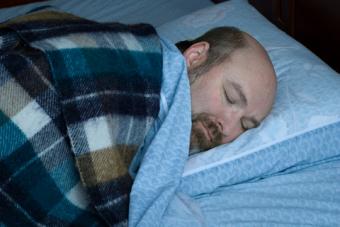
Introduced in 1989, Snore Guard is a stop snoring mouthpiece that offers impressive results. Considering the function, benefits and accessibility of this oral device is a great way to determine if the product is right for your snoring problem.
Function
The oral apparatus fits in the mouth much like a mouthpiece worn by athletes. The design is quite simple, and it is made of thermoplastic. The simple design and sterile thermoplastic composition have many uses in an effective snoring solution. Using the device is simple; patients wear the device while they sleep.
Snoring may occur when the airway is blocked. Snore Guard functions as a safe way to keep the airway passage open. The device does this in a couple ways:
- Fits snug on the upper teeth, allowing the lower teeth to rest on the guard
- Prevents the tongue from sagging back into the throat
- Keeps the jaw in a natural position
Maintenance
The remarkably simple device is easy to maintain. Wearers use a toothbrush and toothpaste to brush the guard clean. The manufacturer recommends putting the apparatus in the container provided. It is important to avoid soaking the device in mouthwash because the substance can soak into the plastic, leading to irritated gum tissue.
How to Purchase a Snore Guard
The first step in the process is to find a dentist that offers Snore Guard. People who have trouble locating a dentist in their area can contact the manufacturer at info@snoreguard.com with the following information:
- City
- Area code
- Zip code
The company will send a list of dentists that offer the product in the nearest locations.
Fitting
The snore mouthpiece requires a visit to a dentist for proper fitting. Finding the perfect fit is easy and it is painless. X-rays, lab work and special tools are unnecessary. The process is completed in one visit:
- The dentist brings a blank guard to a boil in a water bath.
- The device is boiled for one minute.
- Once the apparatus is transparent and floating on the water, it is removed and allowed to cool for 20 to 30 seconds.
- While the plastic is warm and soft, the dentist presses it into the upper teeth.
- The patient bites down naturally, allowing the device to take form for about 30 seconds.
- The dentist trims excess material from the snore mouthpiece for a perfect fit.
Benefits
A glaring benefit of the snoring mouthpiece is its effectiveness. The 1995 publication Oral Applications for the Treatment of Snoring and Obstructive Sleep states that 99 percent of users experienced significant relief from snoring and 50 percent experienced complete elimination of snoring.Patients who snore less experience fewer sleep disturbances throughout the night, leading to a better night's rest. Deep, restful sleep is crucial to proper functioning throughout the day. People with some conditions may or may not benefit from the snore mouthpiece.
TMJ Dysfunction
Those experiencing Temporomandibular Joint Dysfunction (TMJ) dysfunction need to have an evaluation. In many cases, the device places no extra strain because the placement of the device is in the center of the mouth. The product has a design that is similar to ones created to correct TMJ problems.
Sleep Apnea
A 1996 study comparing Snore Guard to nasal Continuous Positive Airway Pressure found that nearly half of the sleep apnea patients in the study found relief from sleep apnea using the mouthpiece and six out of seven preferred the guard to a CPAP device.
Dentures
People who wear dentures do not benefit from the device. The fitting process requires upper teeth in order for proper fit. The product also relies on the bottom teeth for proper mouth positioning during sleep.
Cost
This snore mouthpiece is inexpensive compared to other medical treatments for snoring. The manufacturer suggests consulting a dentist for a price quote for each individual fitting.
Insurance
While insurance companies may fail to recognize a snoring condition as a health problem, some insurance providers may accept certain insurance codes for the device, especially if the patient requires treatment for obstructive sleep apnea. If this is the case, the patient must follow specific steps for coverage:
- Visit a sleep clinic or a medical physician
- Get a referral for a dental fitting for the oral device
- Get filing information from the insurance company
- Present the referral with the insurance claim
Relief from Snoring
Using a device like Snore Guard in addition to other ways to stop snoring can be a viable approach to get the relief from snoring that you seek. The effort it takes to find the right fit can pay off in better rest and better overall health.







